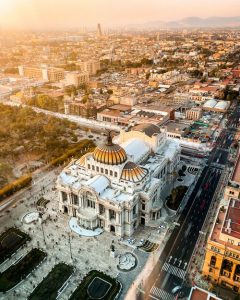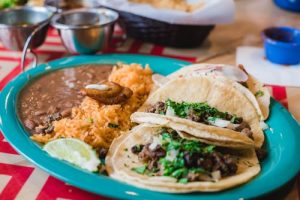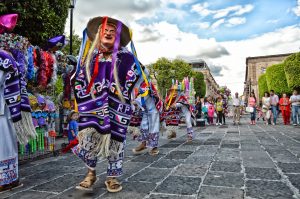In the far south of North America, lies a country of rich ethnicity and vibrant cultures. Mexico. Native cultures do not bound it, but an amalgamation of many ancient cultures and migrants from different migrants of the yesteryears. Mexico has a vibe of being a hippie, Hispanic, and a country of ethnic origin.
Its rustic and bohemian appeal invites travelers and foodies from all over the world to explore and indulge in. The unique civilizations that have housed here are those of Aztec and Maya. These civilizations, coupled with European colonization over the decades, have given Mexico a scarce and fascinating culture, a world apart from other countries.
The year-long traditions and food culture have dominated the spirit of people who live here. It rubs off its essence on the people that visit Mexico. It is a very much sought out destination for travelers from around the world. They experience warmth and welcome when in the country of Mexico. Let us take a look at which cultures have housed themselves in Mexico and how they impact the customs, rituals, traditions, food, and overall complex ethnicity of Mexico.
Heritage

The United States, before it came to know as we know it, was explored and invaded by the Spanish for the longest time. It started in the early 1500s and continued through the 1700s. During the uproar and freedom which came from the civil war, almost 10000 Hispanics were left on Mexican soil. They started a life there. From the year 1805, the Hispanic influence in Mexico has remained and grown to shape identity to this place.
Food traditions of Mexico

The cuisine of Mexico is like a food haven for anyone who tries it. It is replete with flavors, grains, spices, tanginess, and freshness that excites. It is one of the most complex and ancient kinds of cuisine that you will come across. The reason is the country’s vast ancient culture and Hispanic heritage that is spread out over decades.
True to the country’s cuisine and invading of the Spanish brings a random canvas to the food. Wheat, barley, flour, fresh fruits like grapes, lemons, avocadoes, corn, fresh vegetables form a big part of the cuisine. The most important is the spices that hold all the elements together. Mexican food has a USP of spice.

Mexican food is not subtle in spices but not unbalance in flavoring. No Mexican ever agree to their food being too spicy. On the health quotient, they have a well-balanced meal of enough protein with fiber and just enough carbs, loaded with flavor. Tacos, quesadillas, nachos, tostadas, salsa, enchiladas and chilaquiles are not to be missed and are only some of the delectable meals Mexico churns out. Especially when it comes to spicy American cuisine, no one does it better than them.
Local heritage and city vibes

Mexico is not complete if you haven’t visited experienced the iconic music and folk dance of the country. The Mariachi music is dated back to the 18th century and rules the music lovers’ hearts till date. The Mexican hat dance, which musicians are wearing charro suits and ladies in vibrant, colorful outfits are a feast for the eyes.
It is the country’s national dance, which is performed everywhere by small dance folks around the city in streets and restaurants, which adds a folksy vibe to the culture. Mexican markets open up small pop shops that display crafts and arts all year round.
There are a variety of markets for everyone, from the traditional markets to hippy ones and even the traditional markets. Shop from a range of sparkling things that the chirpy vendors sell, let the warmth of traditional Mexican aura set the right mood for shopping, and indulge in some mouth-watering treats at these markets.
Celebrations and festivities

It is considered as a year-long touristy place given the various festivities that happen all around the year. The best time to visit Mexico is during its non-monsoon season. You want to plan travel between December to April. Mexico is the most refreshing and most pleasant in December and February, with temperatures still as high as 28C. May to October is the wet season months.
December to February are also the most beautiful months because of the festive season with celebratory events put up by the locals for where you can relish great food, sweets, and their famous drinks painted and decorated rooftops and the gigantic boom of colors in the background.
Conclusion
Many things can catch you off guard and throw some surprises while you make your way through Pandora’s box of unorganized calm due to the varied cultures and language. The easiest way to get through traveling to Mexico is to plan your trip to the very last detail, so anything that goes wrong will always be prepared.
